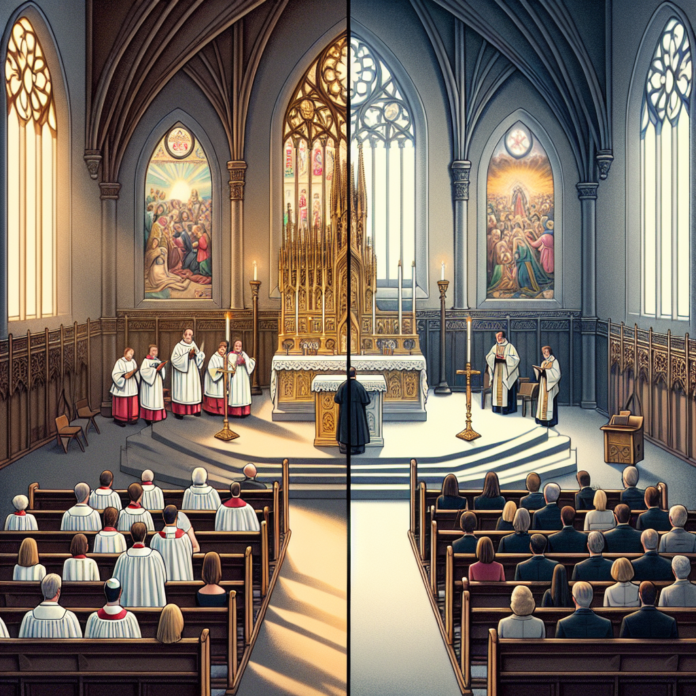Latin Mass: The Great Divide in Catholic Worship Practices
In recent years, the Catholic Church has experienced a growing tension between traditional practices and modern reforms, with the Latin Mass often at the heart of this divide. As the Church continues to navigate these challenges, it becomes crucial to examine the historical context and contemporary implications of the Latin Mass, while also addressing how progressive values can guide the Church forward in the 21st century.
Historically, the Latin Mass, or the Tridentine Mass, was established following the Council of Trent in the 16th century. It remained the primary form of Catholic liturgical celebration for over 400 years, emphasizing uniformity, reverence, and Latin as a sacred language. While this tradition provided consistency across the global Church, it also imposed a rigid structure that left little room for cultural diversity and local participation.
The tides began to change in the mid-20th century with the Second Vatican Council (1962-1965), a watershed moment that sought to foster inclusivity and engagement within the Church. This ecumenical council introduced the Mass of Paul VI, or the Novus Ordo, which allowed the celebration of Mass in vernacular languages. With this reform, the Church aimed to make liturgy more accessible and understandable to the laity, encouraging active participation and embracing cultural diversity.
Despite the council’s intentions, the transition from Latin Mass to the Novus Ordo was met with resistance by some Catholic traditionalists who viewed the changes as a departure from sacred tradition. Over the years, the Latin Mass became a symbol of this traditionalist faction within the Church, often associated with a broader conservative ideology resistant to change. This resistance is more than just about language—it’s about control, hierarchy, and maintaining a certain nostalgic ideal that doesn’t always align with contemporary realities.
Critics of the Latin Mass movement argue that its emphasis on ritualistic precision and exclusivity can alienate Catholics seeking a more inclusive and spiritually enriching experience. They suggest that traditionalist adherents often prioritize form over substance, focusing on maintaining the past rather than engaging with the present. Moreover, there’s a concern that these celebrations can inadvertently foster a culture of elitism and clericalism, running counter to the Church’s mission of solidarity and service to all people.
In contrast, Pope Francis has cemented his legacy as a reformer committed to progressing the Church. His papacy has been marked by efforts to build a more inclusive and compassionate Church, addressing issues like social justice, environmental stewardship, and global migration.
In July 2021, Pope Francis issued the apostolic letter "Traditionis Custodes," placing new restrictions on the celebration of the Latin Mass. This was a decisive move to unify the Church and prevent divisions caused by the rise of traditionalist communities. Pope Francis emphasized that the liturgical reforms of Vatican II are the unique expression of the law of prayer in the Roman Rite, advocating for unity and discouraging practices that create division.
The response to "Traditionis Custodes" has been mixed, with traditionalists expressing disappointment and progressives welcoming it as a step towards inclusivity. By curtailing the expansion of Latin Mass celebrations, Pope Francis has underscored the importance of embracing the reforms initiated by Vatican II, emphasizing a Church that serves and speaks to its diverse community.
Supporters of Pope Francis’s stance argue that the Church must remain relevant and connected to the lives of its followers. They believe that adapting to the needs of contemporary society does not dilute faith but enriches it, helping the Church to fulfill its mission of love and compassion. By fostering an inclusive environment, the Church can better address the issues of the day and draw people closer to the message of the Gospel.
Moreover, this emphasis on adaptability aligns with a broader vision for a Church that transcends cultural and linguistic barriers. As Catholicism continues to grow in regions like Africa, Asia, and Latin America, it is imperative that liturgical practices reflect the cultural diversity of the global Church. This vision challenges the notion that faith is static, encouraging a dynamic relationship with tradition that respects the past while engaging with the present.
Ultimately, the Latin Mass debate illustrates the complexities of tradition and progress within the Catholic Church. As the Church moves forward, it must continue to balance reverence for tradition with the imperative to adapt and minister effectively in a rapidly changing world. Through dialogue, inclusivity, and a commitment to social justice, the Church can remain a vibrant, relevant force for good in an increasingly interconnected global community. By embracing progressive values, the Catholic Church can continue to inspire and unite its followers, ensuring that its message of love and hope endures for generations to come.
